I still remember my first vampire story – stayed up way too late reading it as a teenager, then couldn’t sleep because every shadow looked suspicious. Sound familiar? That’s the magic of a really good vampire tale, and it sparked a lifelong obsession with these undead creatures that’s taken me from classic Gothic horror all the way to modern urban fantasy.
Here’s the thing about vampire stories: they’ve been captivating readers for centuries, evolving from ancient folklore into some seriously compelling literature. According to Awesome Dice, vampires have appeared in thousands of films, shows, games, and books – we’re talking at least 190 movies alone featuring these immortal creatures. So I’ve put together my personal list of 25 vampire stories that have genuinely kept me up at night (and not just because I was scared to turn off the lights). These aren’t just random picks – each one has something special that sets it apart.
What I Look for in a Great Vampire Story
Look, not all vampire stories are created equal. After reading way too many of these over the years, I’ve figured out what separates the unforgettable ones from the forgettable vampire romance novels cluttering up bookstore shelves.

First off, they need to do something fresh with the vampire mythology. I’m talking about writers who either honor the classic vampire rules in interesting ways or completely flip them on their head. The best stories avoid those tired “sexy vampire falls for clumsy human” tropes while keeping what makes vampires genuinely compelling – their immortality, that predatory nature, and the weird relationship they have with humanity.
The characters have to feel real, even when they’re supernatural. Multi-dimensional vampires need clear motivations beyond just “I’m hungry for blood.” They should feel genuinely otherworldly yet somehow relatable. And please, for the love of all that’s holy, let the human characters serve purposes beyond being vampire snacks or love interests.
World-building matters more than you’d think. Whether we’re talking gothic castles, modern cities, or futuristic landscapes, the setting needs consistent rules about how vampires work in that world. What are their abilities? Their weaknesses? How does society function with these predators around?
Understanding what makes stories tick becomes crucial when you’re diving into vampire narratives – check out these story theme examples if you want to see how the best tales work.
|
What Makes Them Great |
Classic Example |
Modern Example |
Why It Works |
|---|---|---|---|
|
Fresh Take on Vampires |
“The Vampyre” (1819) |
“I Am Legend” (1954) |
Scientific explanations, subverted expectations |
|
Complex Characters |
“Carmilla” (1872) |
“Let the Right One In” (2004) |
Real motivations, actual growth |
|
Solid World-Building |
“Dracula” (1897) |
“The Coldest Girl in Coldtown” (2013) |
Consistent rules, believable settings |
|
Deeper Themes |
“Good Lady Ducayne” (1896) |
“Bloodchild” (1984) |
Social commentary, big questions |
|
Cultural Authenticity |
Traditional Folk Tales |
“A Kiss to Wake the Dead” (2008) |
Diverse perspectives, real representation |
But here’s what really separates the great ones: thematic depth. The vampire condition becomes a lens for exploring bigger questions about mortality, power, isolation, or what it means to be human. Blood-drinking isn’t just blood-drinking – it’s a metaphor for something larger.
The pacing has to be just right. Great vampire stories balance action with character development, mystery with revelation, horror with other emotions. That gradual reveal of the vampire’s true nature? When done right, it’s absolutely perfect.
And honestly? Cultural relevance matters. Modern vampire fiction should reflect current concerns while incorporating diverse perspectives beyond the usual European vampire stuff. There’s so much rich vampire folklore from around the world that most people never hear about.
The Classics That Started It All
These are the stories that basically invented vampire fiction as we know it. Fair warning – some of the language feels dated now, but the core ideas are still absolutely brilliant.
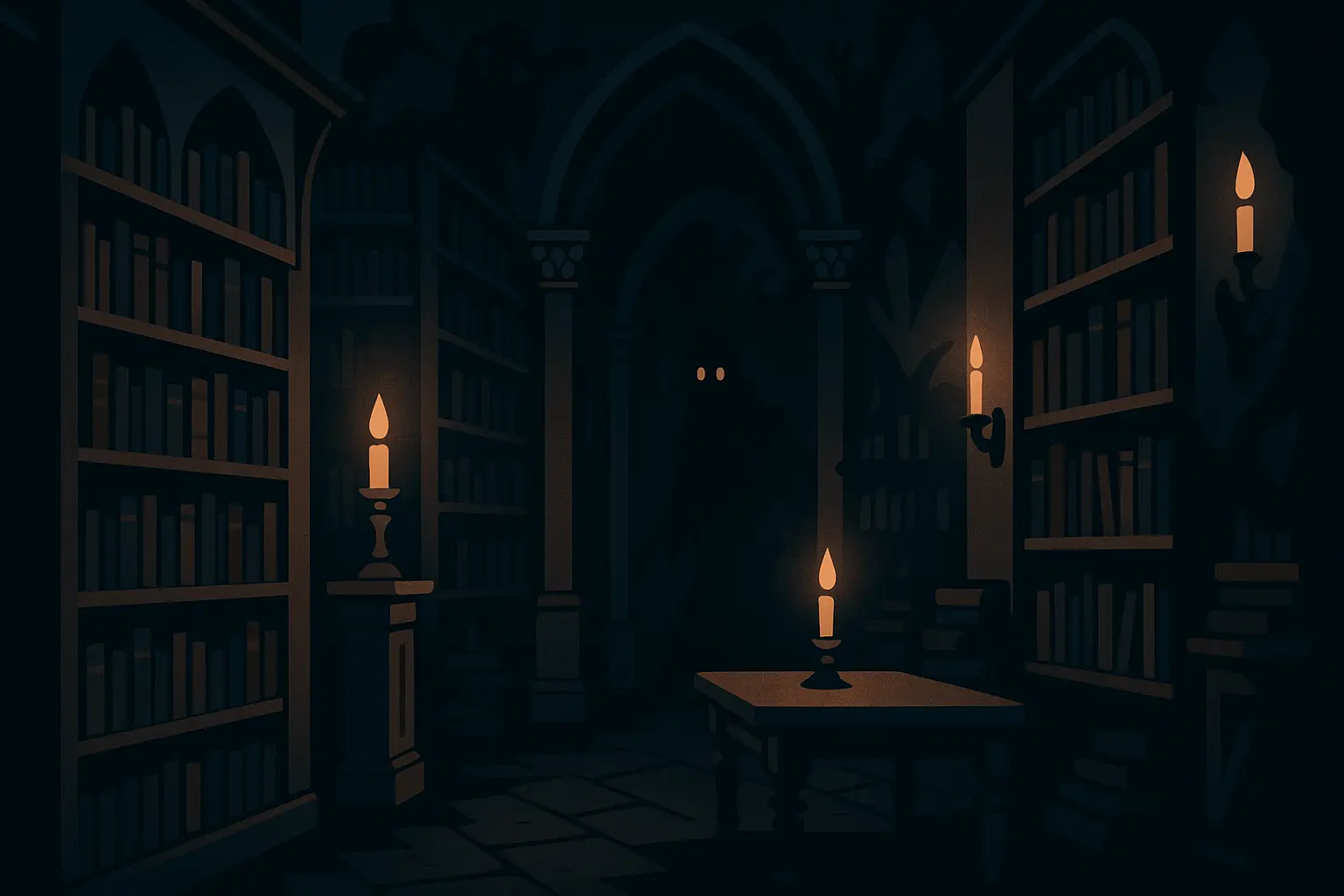
“Carmilla” by Sheridan Le Fanu (1872)
Okay, so this one came out 25 years before Dracula and honestly? It’s way more interesting. Laura lives in this isolated castle when the mysterious Carmilla shows up after a carriage accident. Their growing friendship slowly reveals Carmilla’s vampiric nature through increasingly intimate encounters.
What I love about this story is how Le Fanu builds the tension. When Carmilla first appears, she just seems a bit eccentric – sleeping late, avoiding certain foods, weirdly strong. It’s only through all these little details that Laura (and you as the reader) start to realize something’s seriously wrong. This slow-burn revelation became the template for vampire fiction.
But here’s what was really revolutionary for 1872: the exploration of forbidden desire between women. Carmilla’s relationship with Laura goes way beyond typical predator-prey dynamics. There’s genuine emotional connection alongside the supernatural threat, which influenced pretty much every complex vampire story that followed.
Le Fanu really knows how to set a creepy scene too. You can practically feel the dampness in those old castle walls, and don’t even get me started on the forest scenes – they’re genuinely unsettling.
“The Vampyre” by John Polidori (1819)
This is literally the first published vampire story in English, and it created the whole “aristocratic vampire” thing that dominated the genre for centuries. Lord Ruthven is sophisticated evil personified – charming, wealthy, and completely without conscience.
What’s brilliant about Polidori’s approach is that his vampire operates through social manipulation rather than supernatural powers. Ruthven charms his way into Aubrey’s confidence, convincing this naive young guy to travel across Europe with him. The social predation is way more terrifying than any physical threat.
The story follows Aubrey’s gradual realization of Ruthven’s true nature, and each revelation builds this horrible understanding that he’s been enabling the vampire’s crimes through his own gullibility. The psychological destruction of the protagonist became a recurring theme in vampire literature.
Every aristocratic vampire since – from Dracula to modern urban fantasy nobles – owes something to Lord Ruthven. The character established vampires as creatures of refinement and culture rather than mindless monsters, which opened up so many possibilities for complex vampire protagonists.
“Dracula’s Guest” by Bram Stoker
This was originally supposed to be the opening chapter of Dracula, and you can see why Stoker’s editor might have thought it was too much. An English tourist ignores warnings about traveling on Walpurgis Night and encounters supernatural forces in a Munich cemetery.
Stoker builds tension through environmental details – gathering storms, howling winds, the eerie silence of abandoned graveyards. He creates this mounting dread without revealing specific supernatural threats, which lets your imagination fill in the blanks. Sometimes that’s way more effective than showing everything.
The mysterious wolf that appears during the climax connects to Dracula’s shapeshifting abilities, while the tourist’s narrow escape foreshadows the vampire’s later pursuit of English victims. It’s a nice preview of the international scope of vampiric threat.
“The Room in the Tower” by E.F. Benson
Now here’s where things get weird. Benson’s psychological vampire story explores the intersection between dreams and reality. The protagonist has these recurring nightmares about staying in a house with a specific room occupied by the vampiric Mrs. Stone.
What’s genuinely creepy about this story is the inevitability of it all. Despite the protagonist’s attempts to avoid the dream scenario, circumstances keep conspiring to place him in the exact situation he’s experienced in nightmares. It’s like watching a car crash in slow motion.
Mrs. Stone represents a different type of vampire – one who exists primarily in psychological space before manifesting physically. This approach influenced later vampire stories that emphasized mental rather than physical predation.
The exploration of prophetic dreams and psychological horror expanded vampire fiction beyond physical threat. Benson showed how vampiric themes could address mental anguish and the terror of predetermined fate.
Contemporary Horror That’ll Mess with Your Head
Modern horror writers have completely revolutionized vampire fiction by incorporating contemporary themes and literary techniques. These stories often tear apart traditional vampire mythology while addressing current social concerns. Fair warning: some of these get pretty intense.
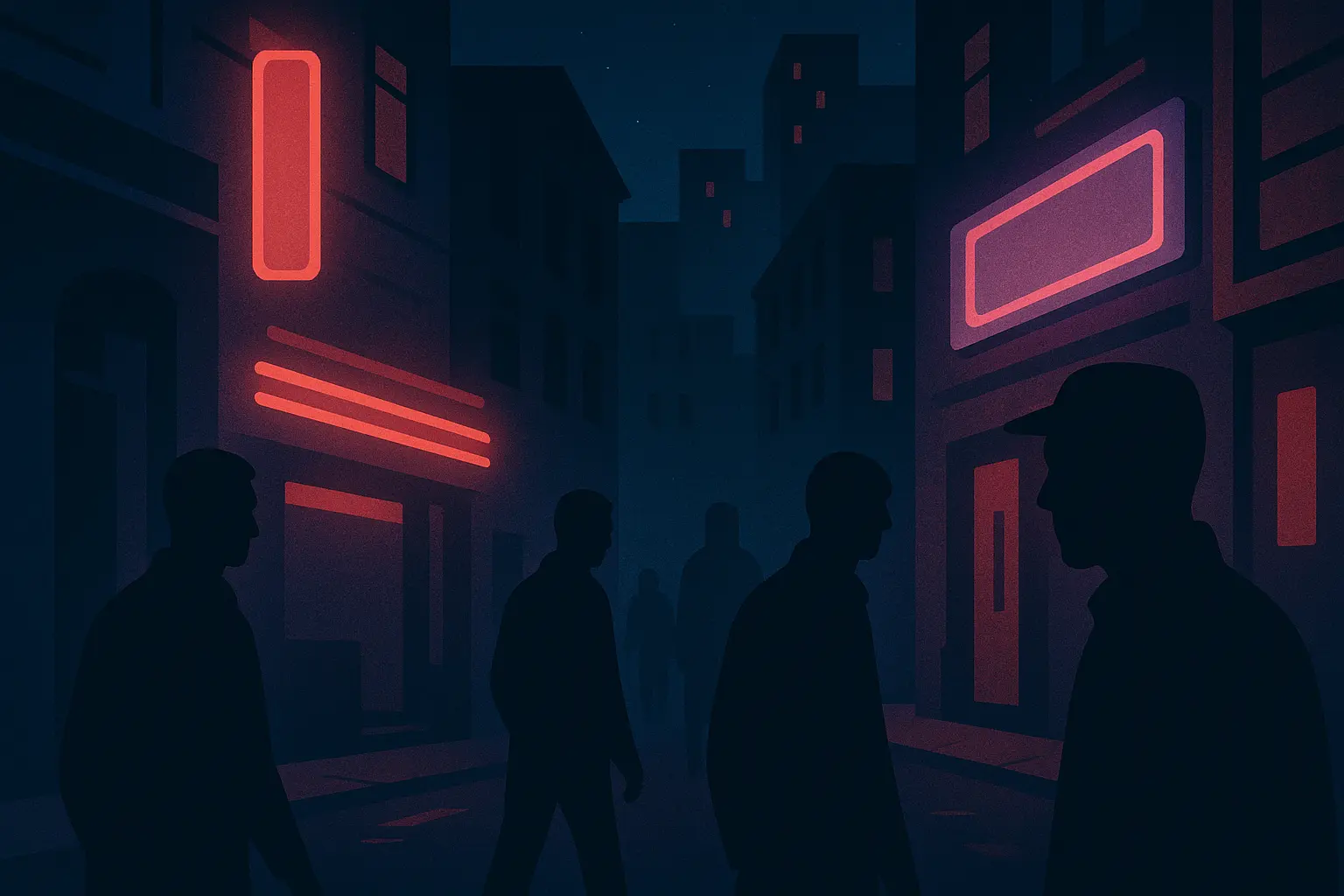
If you’re interested in what makes modern horror really work, check out these spine-chilling horror techniques that contemporary vampire writers use.
“Bloodchild” by Octavia Butler
Okay, so this isn’t technically about vampires, but Butler’s science fiction masterpiece explores parasitic relationships that are central to vampire fiction. Humans serve as hosts for alien reproduction in this complex arrangement that challenges everything you think you know about predator-prey dynamics.
The story examines themes of consent, bodily autonomy, and mutual dependence that run throughout vampire literature. Butler forces you to question who actually benefits from parasitic relationships and whether such arrangements can ever be truly consensual.
The alien Tlic need human hosts for reproduction but also protect humans from other threats. This symbiotic relationship complicates simple victim-predator narratives, suggesting that vampiric relationships might involve mutual benefit rather than pure exploitation.
What really gets me about “Bloodchild” is how Butler explores consent. Unlike traditional vampire stories where victims are just prey, this presents a scenario where the human protagonist Gan must actively choose to serve as a host. This choice, made under complex circumstances involving family obligations and survival needs, mirrors how contemporary vampire stories often explore the grey areas of consent and coercion in supernatural relationships.
“The Hunger and Ecstasy of Vampires” by Brian Evenson
Evenson’s experimental horror combines body horror with vampire mythology in ways that’ll make you seriously uncomfortable. His vampires undergo grotesque physical changes that completely destroy any romantic vampire portrayals you might have in your head.
The story emphasizes the horror of vampiric transformation rather than its allure. Evenson’s vampires experience painful physical metamorphosis that destroys their human identity, creating visceral horror that contrasts sharply with seductive vampire fiction.
The narrative structure mirrors the disorientation of vampiric transformation. Fragmented prose and shifting perspectives reflect the protagonist’s loss of human consciousness and identity. I’ll be honest – this one gave me nightmares for weeks.
“A Kiss to Wake the Dead” by Tananarive Due
Due’s contemporary vampire story features an African American protagonist dealing with inherited supernatural curses. The narrative explores themes of family heritage, cultural identity, and the weight of ancestral obligations.
What I love about this story is how Due incorporates authentic African American folklore and spiritual traditions. She moves beyond European vampire mythology to explore diverse cultural perspectives on supernatural predation and protection, and it feels natural, not like she’s checking boxes for diversity points.
Due’s vampire addresses contemporary concerns about cultural identity and historical trauma. The supernatural curse becomes a metaphor for inherited trauma and the responsibility to protect one’s community from ongoing threats.
“Good Lady Ducayne” by Mary Elizabeth Braddon
Braddon’s Victorian vampire story features an elderly woman who maintains her youth through vampiric means, combining medical horror with supernatural themes. The tale explores Victorian anxieties about aging, mortality, and the exploitation of young women by powerful figures.
Lady Ducayne employs young companions who mysteriously weaken during their service. The story incorporates early medical knowledge about blood transfusions and life extension, reflecting Victorian fascination with scientific advancement and its potential dangers.
The narrative examines power dynamics between wealthy employers and vulnerable employees. Braddon uses vampiric themes to critique social exploitation while exploring fears about medical experimentation and unnatural life extension.
Urban Fantasy Vampires Living in the Modern World
Urban fantasy completely changed vampire fiction by dropping immortal predators into contemporary city settings. These stories explore how vampires might actually adapt to modern life while maintaining their supernatural nature. Some of these get pretty creative with the logistics.
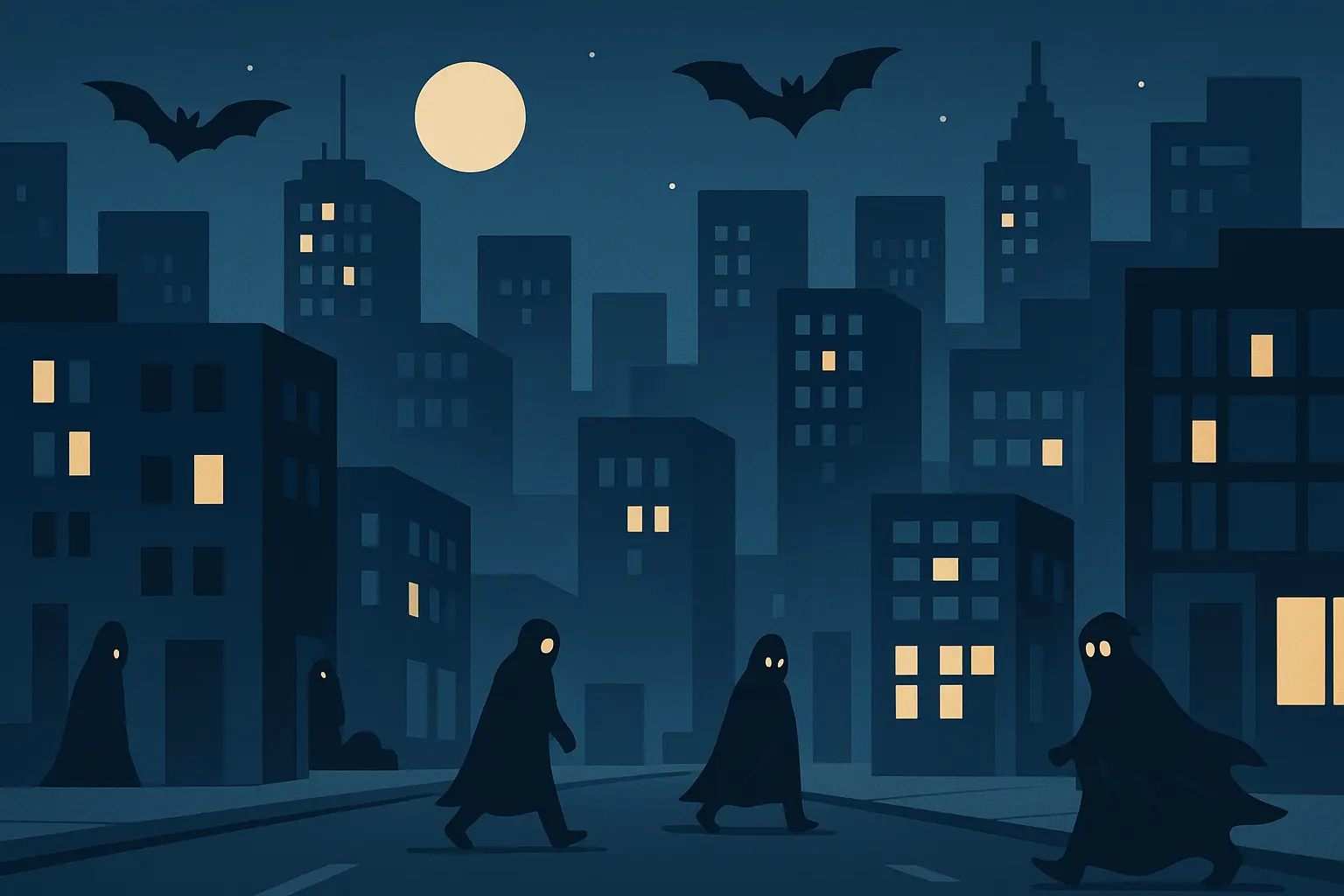
“Sunshine” by Robin McKinley
McKinley’s urban fantasy features Rae “Sunshine” Seddon, a baker who survives vampire capture in a post-apocalyptic world. The story combines urban fantasy with dystopian elements, exploring survival and unexpected alliances.
Sunshine discovers hidden magical abilities while imprisoned with Constantine, a vampire who becomes an unlikely ally. Their cooperation challenges traditional vampire-human antagonism while exploring themes of survival and mutual dependence.
The post-apocalyptic setting creates a world where vampires and humans coexist uneasily. McKinley’s world-building establishes complex supernatural rules while maintaining urban fantasy’s contemporary feel through modern technology and social structures.
“Blood Oranges” by Kathleen Tierney
Tierney’s urban fantasy combines vampire themes with noir detective fiction. The vampire protagonist investigates supernatural crimes while navigating the complexities of modern urban life and law enforcement.
The story shows how vampire characters can function as protagonists in procedural narratives. The vampire detective’s supernatural abilities provide advantages in investigating otherworldly crimes while creating unique challenges in maintaining cover.
Tierney’s atmospheric urban setting creates a believable world where supernatural and mundane crimes intersect. The noir elements add psychological depth while exploring themes of justice, morality, and the nature of predation.
“The Coldest Girl in Coldtown” by Holly Black
Black’s urban fantasy treats vampirism as an infectious disease requiring quarantine zones called Coldtowns. The story explores addiction themes while examining society’s response to supernatural threats.
The Coldtown concept creates a believable framework for vampire-human coexistence. These quarantine zones become tourist attractions and media spectacles, reflecting contemporary society’s fascination with danger and celebrity culture.
Here’s what’s brilliant about Black’s approach: she actually addresses practical questions most vampire fiction ignores. How would governments respond to a vampire outbreak ? Her answer – quarantine zones that become both prisons and entertainment venues – reflects real-world responses to infectious diseases while commenting on society’s tendency to commercialize tragedy.
The protagonist Tana must navigate Coldtown’s dangers while resisting vampiric transformation. Her struggle reflects addiction narratives while exploring themes of temptation, sacrifice, and the price of supernatural power.
Black’s world-building addresses practical concerns about vampire integration into modern society. The story’s exploration of media, celebrity, and social isolation resonates with contemporary anxieties about fame and transformation.
“Bite Me” by Christopher Moore
Moore’s humorous urban fantasy features vampires dealing with mundane San Francisco problems alongside supernatural challenges. The comedic approach refreshes traditional vampire themes while maintaining supernatural elements.
The stories explore how immortal beings struggle with contemporary technology, social media, and urban bureaucracy. Ancient predators face modern inconveniences, creating comedy through contrast between supernatural power and everyday frustrations.
Moore’s vampires maintain their predatory nature while becoming sympathetic characters through their struggles with modern life. The humor emerges from their attempts to adapt ancient instincts to contemporary urban environments.
The comedic vampire approach influenced urban fantasy’s lighter tone while showing how humor can coexist with supernatural horror. Moore’s work expanded vampire fiction’s emotional range beyond traditional gothic seriousness.
International Vampire Stories You’ve Probably Never Heard Of
Vampire mythology goes way beyond European traditions, and honestly, some of the most interesting vampire stories come from cultures around the world. These international stories preserve diverse cultural perspectives on supernatural predation while exploring universal human fears.
If you want to dive deeper into diverse storytelling traditions, check out these folktale traditions that feature vampiric creatures from around the world.
|
Cultural Tradition |
Creature Name |
What Makes Them Different |
How to Protect Yourself |
Why It Matters |
|---|---|---|---|---|
|
Mexican |
Tlahuelpuchi |
Shapeshifting witch-vampire, can detach limbs |
Metal objects, scissors near children |
Indigenous beliefs about child mortality |
|
Filipino |
Aswang |
Feeds on unborn children, animal forms |
Prayers, blessed objects, community vigilance |
Family protection, birth anxieties |
|
Chinese |
Jiangshi |
Hopping corpse, drains life energy |
Taoist talismans, mirrors, rituals |
Proper burial rites, spiritual balance |
|
Indian |
Rakshasa |
Backwards hands/feet, any form |
Spiritual purification, divine intervention |
Cosmic good vs evil, dharmic principles |
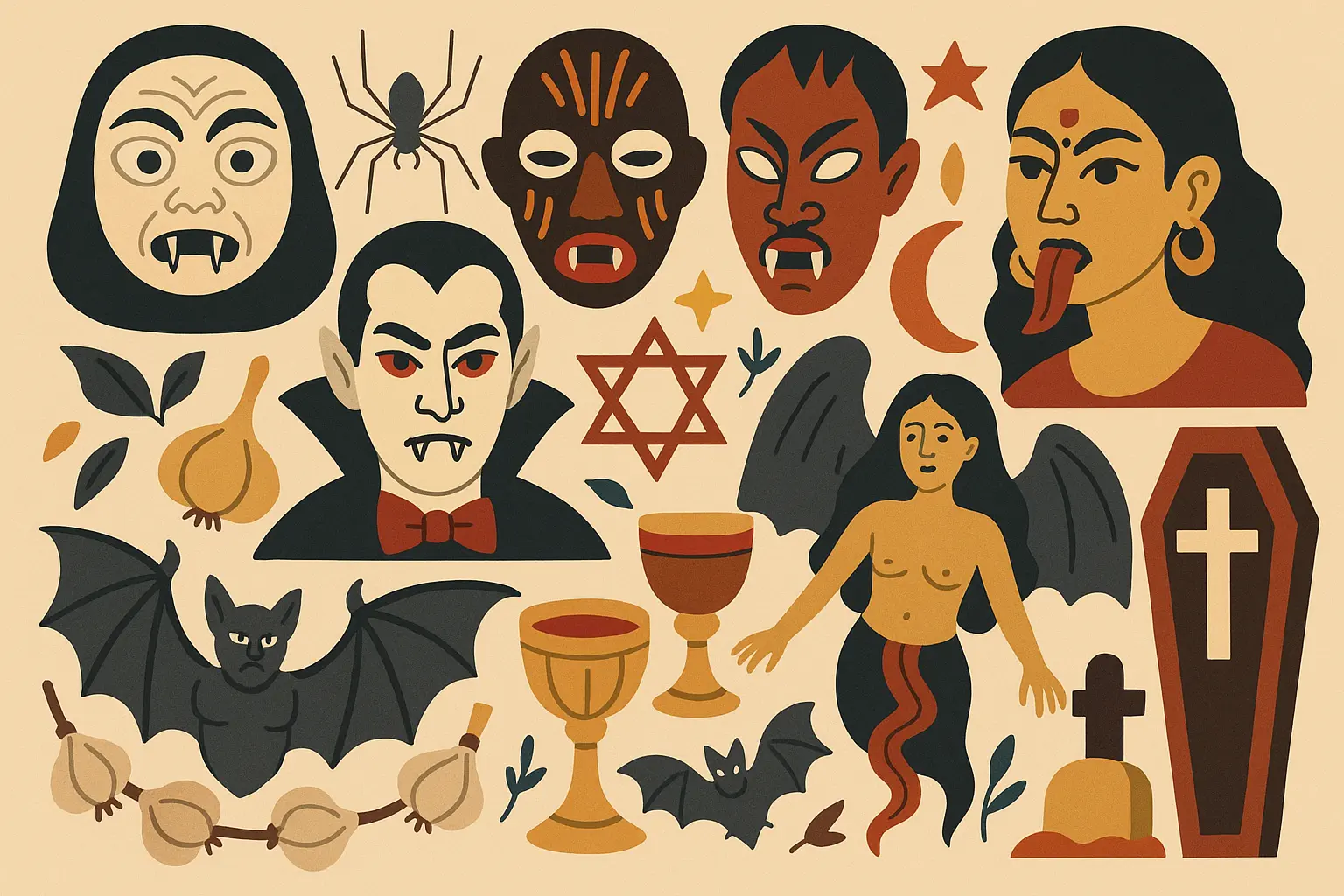
“Tlahuelpuchi” – Traditional Mexican Vampire Folk Tale
This traditional Mexican vampire story features a witch-vampire that must feed on human blood to survive, particularly targeting infants and children. The tlahuelpuchi represents indigenous Mexican beliefs about supernatural threats to community and family.
Unlike European vampires, the tlahuelpuchi is born with the vampiric condition rather than created through bite or curse. During the day, she appears as an ordinary woman, but at night gains shapeshifting abilities, transforming into turkeys, buzzards, fleas, and other animals.
Here’s where it gets really weird: the creature can detach her legs while her torso flies through the night seeking victims. Traditional protections involve placing metal objects like scissors or knives near sleeping children, because the tlahuelpuchi can’t touch metal.
The story reflects indigenous Mexican concerns about child mortality and community vulnerability. The tlahuelpuchi embodies fears about individuals who appear normal but harbor monstrous natures, while incorporating pre-Columbian spiritual concepts with colonial-era Catholic influences.
“The Aswang Chronicles” – Filipino Vampire Stories
Filipino aswang stories feature shapeshifting vampiric creatures that are among the most feared supernatural entities in Philippine folklore. These creatures feed on unborn children and human flesh while possessing the ability to transform into various animals.
Aswang can shapeshift into dogs, pigs, or birds while maintaining their predatory nature. They particularly target pregnant women and newborns, reflecting cultural anxieties about childbirth and infant mortality in traditional Filipino society.
The stories incorporate indigenous spiritual beliefs about supernatural threats to family and community. Aswang represent fears about hidden evil within familiar forms, as they often appear as trusted community members during daylight hours.
Traditional protections against aswang include specific prayers, blessed objects, and community vigilance. These stories emphasize collective responsibility for protecting vulnerable family members while preserving important cultural knowledge about supernatural threats.
“Jiangshi Tales” – Chinese Hopping Vampire Stories
Chinese jiangshi stories feature reanimated corpses that drain life force from the living, representing unique vampire mythology based on Taoist beliefs about death and spiritual energy. These “hopping vampires” create distinctive supernatural creatures unlike Western traditions.
Jiangshi move by jumping with arms outstretched due to rigor mortis, creating their characteristic hopping motion. They drain qi (life energy) rather than blood, reflecting Chinese philosophical concepts about vital energy and spiritual balance.
The stories often result from improper burial practices or spiritual imbalances that prevent souls from moving to the afterlife. Jiangshi represent consequences of failing to honor the dead properly while exploring themes of spiritual responsibility and ancestral obligations.
Traditional methods for dealing with jiangshi include Taoist talismans, mirrors, and specific rituals designed to restore spiritual balance. These stories preserve important cultural knowledge about death rites while entertaining audiences with supernatural horror.
“Rakshasa Stories” – Indian Vampire Demon Tales
Indian rakshasa stories feature shapeshifting demons with vampiric characteristics who consume human flesh and blood. These creatures possess the ability to take any form while maintaining their predatory nature and supernatural powers.
Rakshasa are distinguished by their backwards hands and feet, representing their opposition to natural order and divine harmony. This physical characteristic helps identify them despite their shapeshifting abilities.
The stories incorporate Hindu mythology and spiritual beliefs about cosmic battles between good and evil forces. Rakshasa represent spiritual corruption and the temptation to abandon dharmic principles for personal gain.
Traditional methods for defeating rakshasa involve spiritual purification, divine intervention, and adherence to dharmic principles. These stories preserve important cultural teachings about spiritual warfare while entertaining audiences with supernatural adventure.
Science Fiction Vampires That’ll Blow Your Mind
Science fiction writers have completely revolutionized vampire fiction by providing scientific explanations for vampiric phenomena. These stories blend horror with speculative fiction while exploring themes of evolution, consciousness, and survival. Some of these get pretty wild with their concepts.
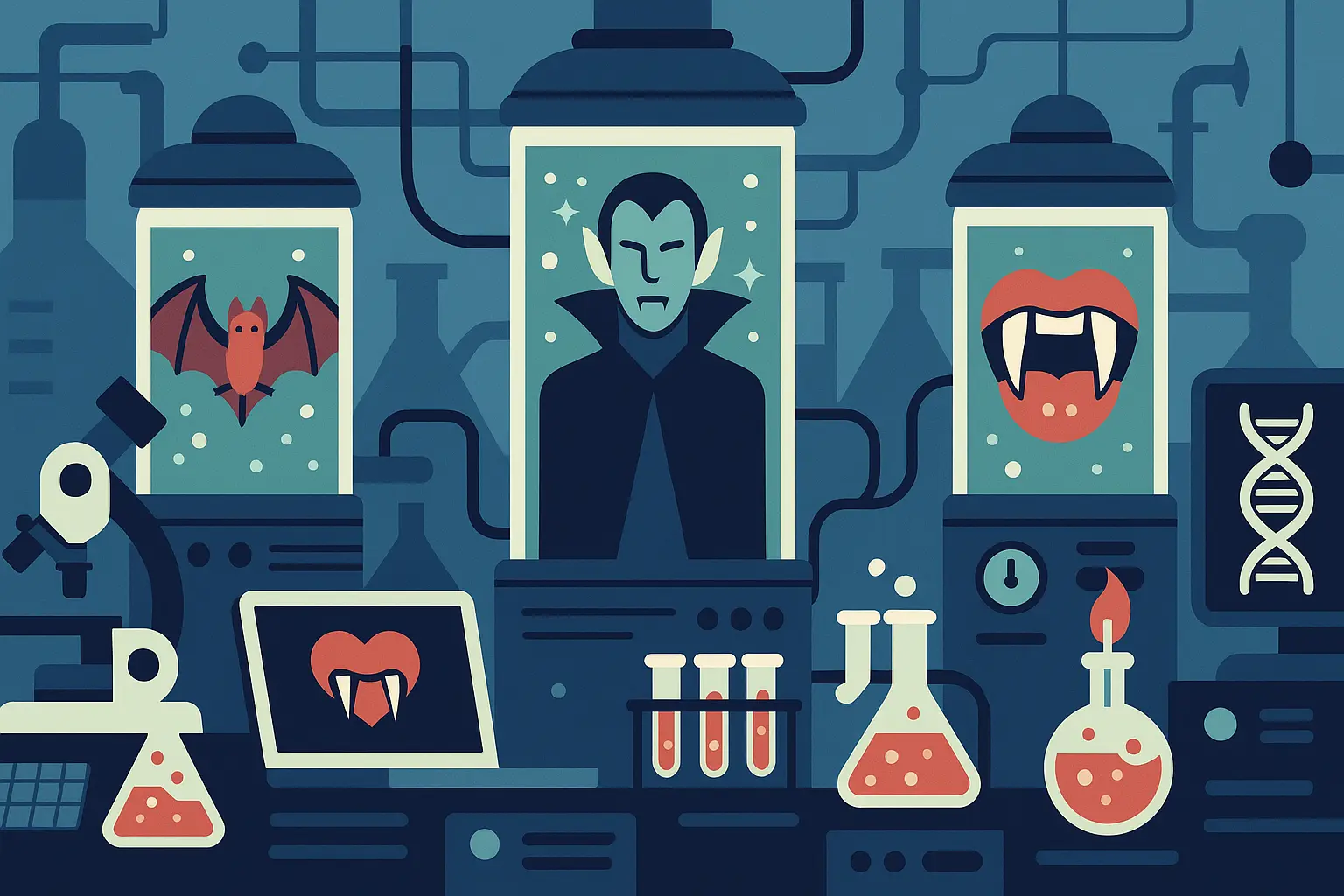
“I Am Legend” by Richard Matheson
Matheson’s groundbreaking story presents Robert Neville as the last human survivor in Los Angeles after a pandemic creates vampire-like mutants. This narrative completely reimagines vampire mythology through scientific explanation while exploring isolation and survival themes.
The story reinterprets classic vampire mythology through a scientific lens – vampirism results from bacterial infection, garlic works due to allergic reactions, and crosses affect only those who believed in Christianity when human. This scientific approach influenced countless subsequent vampire stories.
Neville spends days studying vampirism and hunting sleeping vampires, while nights barricading himself against attacks. His former neighbor Ben Cortman becomes a recurring threat, personalizing the horror through familiar relationships turned monstrous.
But wait, it gets better – the climactic revelation shows that some vampires have learned to control their condition and formed a new society. Neville realizes he’s become their legendary monster – the bogeyman who kills them in their sleep, making him the “legend” of the title. I’m still thinking about this twist months later.
“The Space Vampires” by Colin Wilson
Wilson’s science fiction vampire story features energy-draining entities from space that combine vampire mythology with extraterrestrial horror. These creatures feed on life energy rather than blood while possessing advanced psychic abilities.
The space vampires can manipulate human consciousness and possess bodies, creating psychological horror alongside physical threat. Their advanced mental abilities make them formidable opponents who can turn humans against each other.
The story explores themes of consciousness, identity, and what defines humanity when faced with superior alien intelligence. The vampires’ psychic abilities raise questions about free will and mental autonomy.
“Vampire Junction” by S.P. Somtow
Somtow’s rock star vampire story combines celebrity culture with vampire mythology, featuring an immortal vampire navigating the modern music industry while maintaining his predatory nature and supernatural abilities.
The story explores how ancient predators might adapt to contemporary entertainment industries. The vampire’s immortality provides unique perspective on artistic trends and cultural changes while his predatory nature influences his musical career.
The narrative examines themes of fame, artistic immortality, and the corrupting influence of celebrity culture. The vampire’s relationship with mortal musicians and fans creates complex power dynamics that reflect real entertainment industry exploitation.
“Necroscope” by Brian Lumley
Lumley’s psychic vampire series combines horror with science fiction elements, featuring characters who can communicate with the dead while facing vampiric threats from other dimensions. The work creates unique vampire mythology based on psychic abilities.
The necroscope ability allows communication with deceased individuals, providing information about vampiric threats while exploring themes of death, consciousness, and the afterlife. This psychic element distinguishes Lumley’s vampires from traditional supernatural creatures.
The series features interdimensional vampires with unique abilities and weaknesses that differ from classical vampire mythology. These creatures represent alien forms of vampirism that challenge traditional understanding of supernatural predation.
Experimental Stories That Break All the Rules
Experimental vampire literature pushes genre boundaries by tearing apart traditional mythology while exploring complex themes through innovative narrative techniques. These stories prioritize artistic expression over conventional horror. Pro tip: have some comfort food ready because some of these get pretty heavy.

Writers looking to experiment with narrative approaches can learn from short story techniques that challenge conventional vampire storytelling.
“The Bloody Chamber” by Angela Carter
Carter’s feminist retelling subverts traditional vampire themes through a fairy tale lens, challenging patriarchal narratives embedded in vampire fiction while exploring female sexuality, agency, and empowerment through supernatural metaphor.
The story tears apart vampire-victim power dynamics by creating complex female characters who refuse traditional victim roles. Carter’s protagonists demonstrate agency and resistance while navigating supernatural threats and masculine predation.
The narrative combines gothic atmosphere with feminist themes, using vampiric elements to examine patriarchal oppression and female liberation. Carter’s work influenced feminist horror by showing how traditional monster stories could be completely reimagined.
“Let the Old Dreams Die” by John Ajvide Lindqvist
Lindqvist’s sequel to “Let the Right One In” explores the realistic aftermath of vampire-human relationships while examining long-term consequences of supernatural transformation and the challenges of maintaining connections across species barriers.
The story addresses practical concerns about vampire integration into human society while maintaining emotional complexity. Lindqvist examines how relationships evolve when one partner possesses supernatural abilities and immortality.
The narrative shows how vampire fiction can explore relationship dynamics, personal growth, and the passage of time through a supernatural lens. The realistic approach to vampire-human coexistence creates compelling drama.
“The School Friend” by Angela Carter
Carter’s experimental vampire story explores toxic female relationships through vampiric metaphor, examining how emotional manipulation and psychological predation can drain victims as effectively as physical vampirism.
The narrative uses vampire themes to analyze power dynamics in female friendships while creating psychological horror through realistic relationship dynamics. Carter shows how human predation can mirror supernatural vampirism.
The story’s non-linear structure reflects the disorienting nature of toxic relationships while exploring themes of manipulation, dependency, and emotional exploitation. The vampiric elements remain metaphorical rather than literal.
“Replacements” by Lisa Tuttle
Tuttle’s literary vampire story explores maternal grief and loss through a supernatural lens, examining how bereaved mothers might seek vampiric solutions to replace deceased children while addressing profound themes of motherhood and transformation.
The narrative combines vampire elements with psychological realism, creating horror through emotional authenticity rather than supernatural threat. Tuttle’s approach shows how vampire themes can illuminate human psychology.
The story explores the lengths parents will go to preserve their children while examining themes of replacement, identity, and the nature of love. The vampiric elements serve psychological rather than supernatural purposes.
“Blood Gothic” by Nancy A. Collins
Collins’ postmodern vampire story deconstructs vampire mythology while maintaining compelling narrative elements, featuring meta-fictional approaches and genre awareness that challenge reader expectations about vampire fiction conventions.
The narrative examines vampire fiction’s evolution while creating self-aware stories that comment on genre development. Collins shows how vampire literature can achieve artistic sophistication through innovative storytelling techniques.
The experimental approach combines traditional vampire elements with postmodern literary techniques, creating stories that function on multiple levels while entertaining readers and challenging genre boundaries.
How These Stories Stack Up
These 25 vampire stories demonstrate excellence across multiple areas, each succeeding through different approaches to vampire mythology while maintaining compelling narratives and meaningful themes.
|
Story Type |
How Innovative |
Cultural Authenticity |
Character Depth |
World-Building |
Big Themes |
|---|---|---|---|---|---|
|
Classic Literary |
High (started the genre) |
European traditions |
Multi-layered |
Gothic atmosphere |
Social taboos |
|
Contemporary Horror |
Very High (deconstruction) |
Diverse perspectives |
Psychologically complex |
Realistic integration |
Current anxieties |
|
Urban Fantasy |
Moderate (adaptation) |
Modern urban |
Protagonist-focused |
Rule-based systems |
Contemporary issues |
|
International/Cultural |
Highest (authentic traditions) |
Culturally specific |
Community-centered |
Traditional beliefs |
Universal fears |
|
Science Fiction |
Very High (scientific basis) |
Futuristic speculation |
Evolution-focused |
Speculative worlds |
Consciousness themes |
|
Experimental/Literary |
Highest (genre deconstruction) |
Literary innovation |
Metaphorical depth |
Psychological realism |
Artistic expression |
The real game-changers are stories that completely reimagine vampire mythology. “I Am Legend” provides scientific explanations for vampirism, while “Bloodchild” explores parasitic relationships without traditional vampire elements. “The Bloody Chamber” deconstructs vampire themes through feminist lens, and traditional folk tales preserve indigenous vampire concepts that predate European influence.
Cultural authenticity emerges through authentic representation of diverse vampire traditions. “Jiangshi Tales” present unique Chinese vampire characteristics based on Taoist philosophy, while “Aswang Chronicles” preserve Filipino supernatural beliefs. “Rakshasa Stories” incorporate Hindu mythology, and “A Kiss to Wake the Dead” explores African American supernatural traditions.
Complex character development distinguishes stories featuring multi-dimensional vampiric characters with clear growth arcs. “Carmilla” creates nuanced predator-victim relationships with genuine emotional connection, while “Let the Old Dreams Die” explores realistic consequences of supernatural transformation on human relationships.
Solid world-building appears in stories that create fully realized supernatural societies with consistent rules. “The Coldest Girl in Coldtown” establishes believable quarantine systems for vampire infection, while “Sunshine” develops post-apocalyptic worlds with established vampire-human territories.
Deeper themes distinguish stories that use vampirism to examine complex social issues. “I Am Legend” explores what defines humanity and monstrosity from multiple perspectives, while “Carmilla” addresses forbidden female sexuality and social transgression.
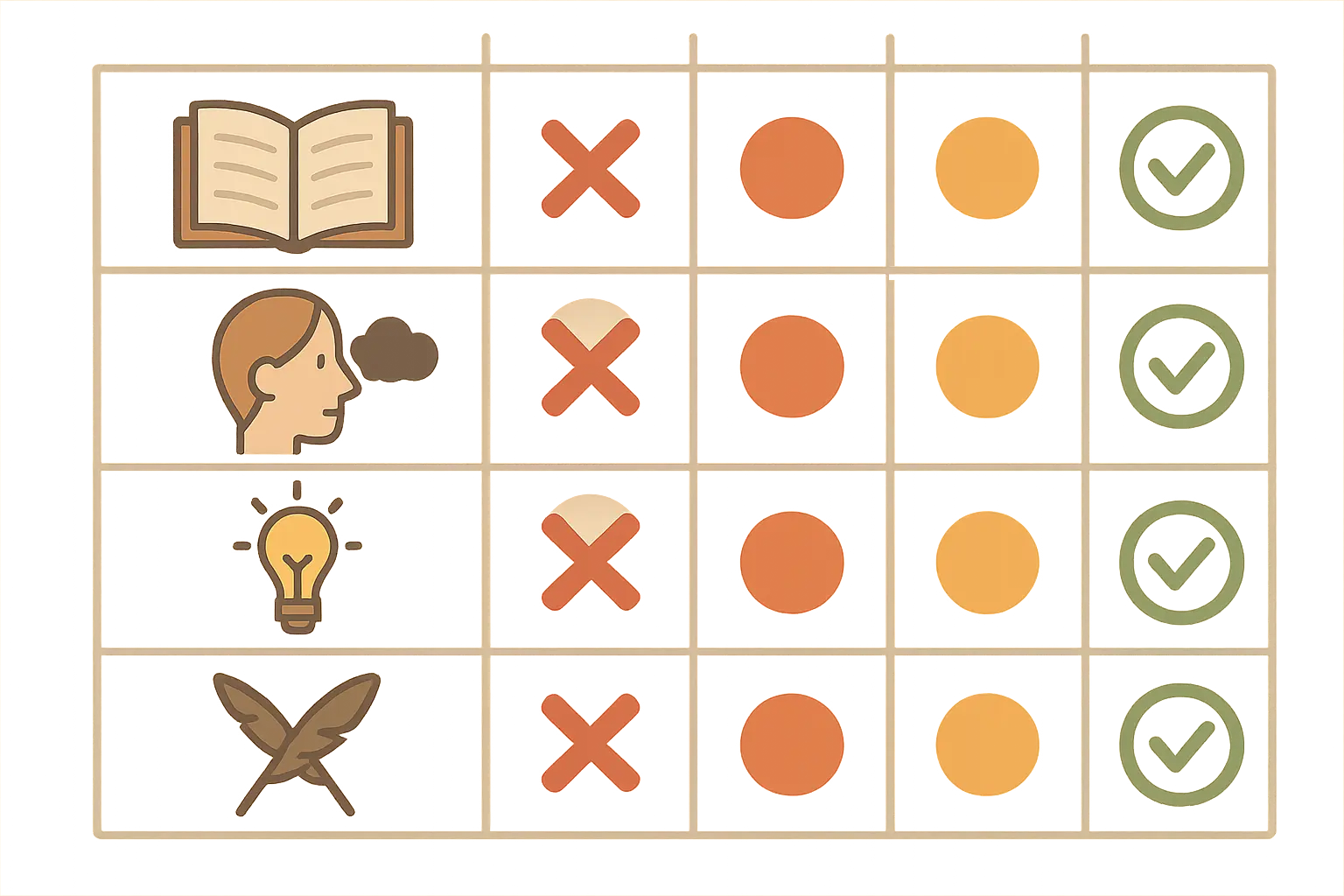
Want to Write Your Own Vampire Story?
Whether you’re inspired by the atmospheric gothic horror of “Carmilla,” the innovative science fiction approach of “I Am Legend,” or the cultural authenticity of traditional folk tales, creating compelling vampire stories requires the right creative tools and inspiration.
If you’re serious about writing, check out the brain science behind effective storytelling to understand what makes vampire narratives truly compelling.
When developing your vampire story, think about how successful authors blend familiar elements with innovation. For instance, if you’re writing urban fantasy, you might combine the quarantine concept from “The Coldest Girl in Coldtown” with the detective elements from “Blood Oranges” and the cultural authenticity from “A Kiss to Wake the Dead.” This approach creates something new while honoring established vampire fiction traditions. Start with one core innovation – maybe vampires who feed on memories instead of blood – then build consistent world rules around this concept.
Nairrate’s AI Story Generator serves as the perfect creative partner for aspiring vampire fiction writers. Just as these successful vampire stories excel through innovative approaches to character development, world-building, and thematic exploration, Nairrate helps you craft your own unique vampire narratives.
Getting compelling story starters becomes effortless with our Story Starters Generator, which provides atmospheric opening lines that set the perfect tone for gothic horror, urban fantasy, or contemporary vampire tales. Need an opening that captures the mysterious allure of vampiric fiction? Our AI understands the nuances that make vampire stories compelling.
Developing complex characters mirrors the multi-dimensional vampires in stories such as “Carmilla” or “Let the Old Dreams Die.” Nairrate helps you create compelling vampiric characters with clear motivations, internal conflicts, and authentic cultural backgrounds that resonate with modern readers.
Building immersive worlds becomes manageable whether you’re crafting contemporary urban fantasy or historical vampire tales. Nairrate assists in developing consistent supernatural rules, atmospheric settings, and complex social structures that enhance your story’s themes.
Writers can also check out horror story generators to develop spine-chilling vampire narratives that capture the essence of supernatural terror.
Exploring diverse perspectives follows the example of culturally authentic vampire stories by helping you incorporate diverse cultural perspectives and contemporary themes into your vampire fiction while honoring the rich tradition of vampiric literature.
The AI’s intuitive understanding of narrative flow and genre conventions makes it an invaluable tool for both novice and experienced writers looking to create vampire stories that capture readers’ imaginations and leave them thirsting for more.
Ready to sink your teeth into vampire storytelling? Try Nairrate today and discover how our AI-powered tools can help you craft compelling vampire narratives that honor this eternal literary tradition while bringing your unique voice to the darkness.
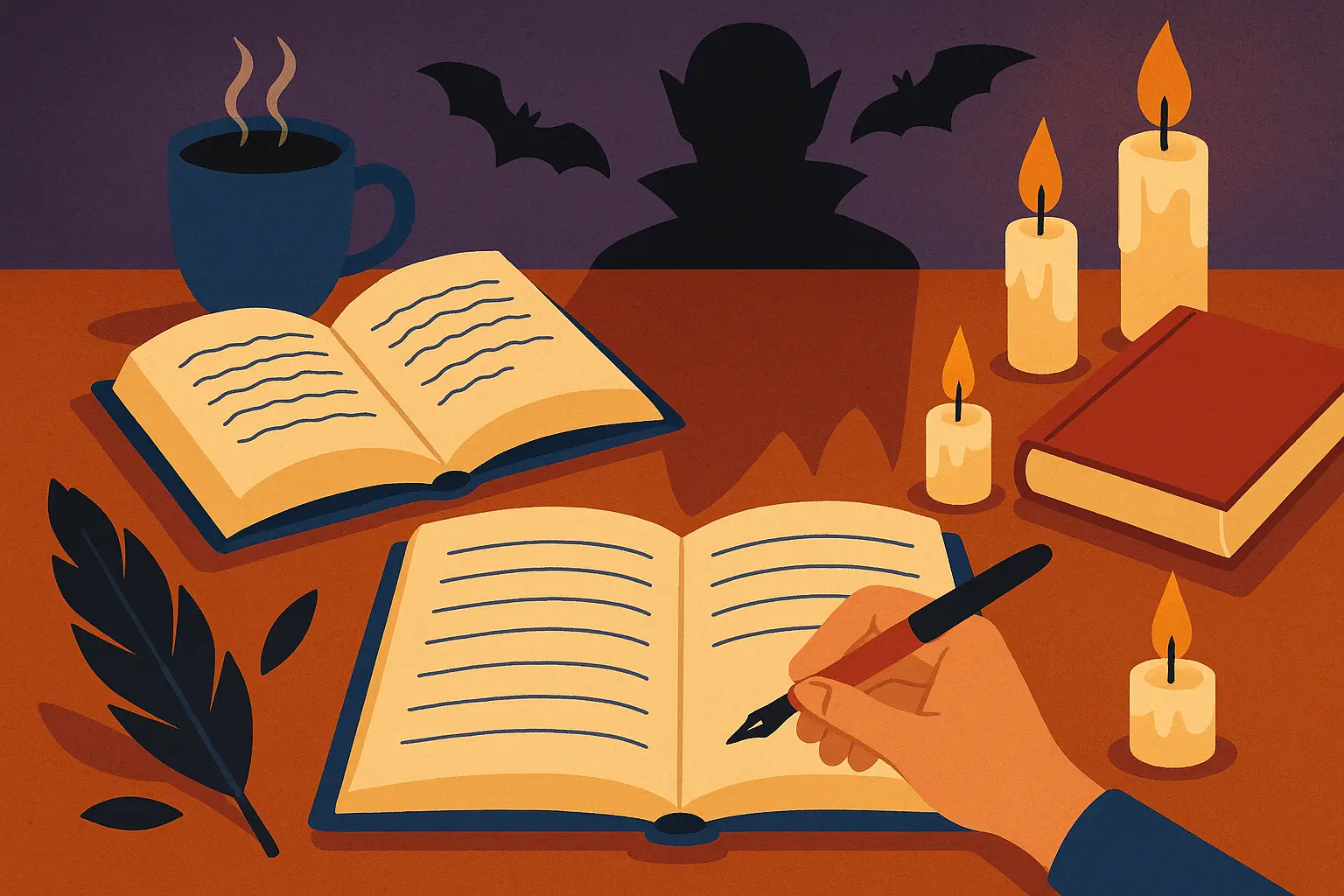
Bottom Line
These 25 vampire stories show just how incredibly diverse and enduring vampire fiction can be. From the pioneering lesbian themes of “Carmilla” to the scientific speculation of “I Am Legend,” from traditional Mexican tlahuelpuchi folklore to experimental postmodern deconstructions, vampire literature keeps evolving while maintaining its essential power to explore fundamental human concerns about mortality, power, and transformation.
The most successful vampire stories go way beyond simple monster tales by combining compelling characters, atmospheric world-building, and meaningful themes with innovative approaches to vampire mythology. Whether you’re honoring traditional folklore or completely reimagining vampiric concepts, these tales succeed by addressing universal human experiences through a supernatural lens while reflecting the cultural contexts and contemporary concerns of their creators.
As vampire fiction continues evolving, new writers have unprecedented opportunities to contribute fresh perspectives to this rich literary tradition. The stories I’ve covered here provide templates for excellence while showing that vampire fiction can achieve both popular appeal and artistic sophistication through diverse approaches to character development, world-building, and thematic exploration.
The eternal appeal of vampire stories lies in their ability to examine what makes us human by exploring what we might become when humanity is stripped away or transformed. These 25 tales prove that vampire fiction remains a vital and evolving genre capable of addressing contemporary concerns while honoring the ancient fears and desires that first gave birth to these immortal creatures of literature.
From famous vampire stories that established the genre to real vampire folklore from cultures worldwide, these vampire books showcase the vampiress as both predator and complex character. Whether exploring the traditional vámpír of European legend or contemporary interpretations, vampire fiction continues captivating readers through its exploration of immortality, desire, and the darkness that lurks within us all.



Add comment